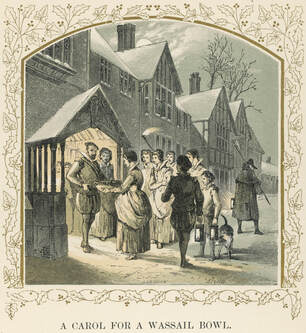 Wassail is a traditional drink that is associated with the Christmas season in many parts of the world. A hot, spiced punch, wassail can be made from a variety of ingredients, including apples, oranges, spices, and ale or wine. Traditionally, it was served from a communal bowl and was meant to be shared among friends and family. The origins of wassail can be traced back to ancient civilizations, where it was used as a way to celebrate the winter solstice and welcome in the new year. In the Middle Ages, wassail was a popular drink during the holiday season, and it was often served at Christmas feasts and celebrations. In some parts of the world, it is traditional to go wassailing, which involves visiting friends and neighbours and singing carols while carrying a bowl of wassail. The tradition of wassailing is still practiced in some areas and is seen as a way of spreading good cheer and celebrating the holiday season. If you fancy a warm, spiced drink for the New Year, but prefer something non alcoholic, then I highly recommend this recipe that was developed for me, when I ran the cook school, by a wonderful lady called Judith. Judith's Fruit Punch  Ingredients
Method
Cooks Tip
0 Comments
This year, with Christmas day falling on a Sunday, we have Boxing Day yesterday and an 'extra' day off today. These days, Boxing Day is seen as the start of the sales. But today, my mind turned to how, as a child, I remember that on Boxing Day, the Post Man (and it was a man in those days), along with the Bin Men and Milk Man, coming around in their ordinary clothes and knocking on each house in our road, and my parents giving them their 'Christmas Box'. Often, they would bring their children with them to introduce to our parents as my mum would often ask about their children when she saw them, during the year. Whilst there doesn't seem to be a clear origin of this tradition, Samuel Pepys mentioned giving money to his tradesmen in his diary entry for 19th December, 1663. Thence by coach to my shoemaker’s and paid all there, and gave something to the boys’ box against Christmas. 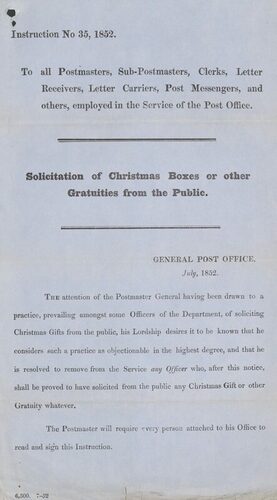 In July 1852, Lord Hardwicke, who was Postmaster General, issued a notice to all senior staff banning ‘any officer’ from soliciting for Christmas gifts from the public. Louise Todd, Archivist at the Postal Museum, in London writes: Lord Hardwicke considered the solicitation to be an ‘oppressive tax’ that would seriously affect the conduct of Post Office officials towards those unwilling or unable to pay. It seems that he did not object to letter carriers being given Christmas gifts if this was done voluntary, but more to the active solicitation by officials. This instruction led to what one minute written many years later described as ‘agitation … throughout the kingdom.’ As you can imagine, this went down like a lead balloon with the postal workers. They turned to their MPs and anyone who they thought could influence this decision. They met with senior people in the Post Office. ‘The number of Letter Carriers of every description who participate in these gratuities is upwards of 1300; the sum divided amongst them is not less than £8000 a year. There are few that get less than £1, some £5, others £10, and in some cases more than this. In most cases, the senior men get the largest amounts as they work the best walks.’ It worked because postal workers in London, Dublin and Edinburgh were except from the ban. You can read more on the Postal Museum blog. So, how much was this Christmas box actually worth? Mr Micawber, in the 1850 published David Copperfield talks of his incoming being around twenty pounds a year. In fact, it was more likely that his income was around £30 per year. So, if a postal worker was getting a Christmas Box of around £5-£10 this was no small thing. Even a pound would be more than a week's wages.
In a time where 25% of the UK population were living below the poverty line and child labour was prevalent, such a small amount of money would have made a massive impact on a working family's life.  The Christmas Spider is a Ukrainian folk tale that tells the story of a poor family who couldn't afford to decorate their Christmas tree. One evening, a spider crawled up the tree and began spinning webs all over it. When the family woke up on Christmas morning, they saw that the spider had turned the tree into a beautiful, shimmering work of art, covered in silver and gold webs. In the story, the spider is seen as a symbol of hope and perseverance, reminding us that even in difficult times, we can find beauty and joy. The story is often used to teach children about the value of hard work and the importance of being grateful for what we have. In Ukrainian tradition, it is also believed that the Christmas Spider brings good luck to the household and protects against evil spirits. Some people even hang small, spider-shaped ornaments on their Christmas trees toto honour this tradition 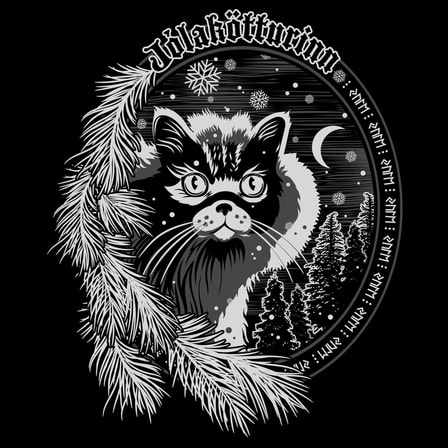 The Yule or Christmas Cat is a figure from Icelandic folklore. According to legend, the Christmas Cat is a large, black feline that lurks around homes on Christmas Eve, waiting to pounce on anyone who has not received new clothing as a gift. The story is meant to encourage people to be generous and give gifts to others, particularly during the holiday season. In Icelandic tradition, it is believed that the Christmas Cat is the pet of the Yule Lads, a group of mischievous, gift-giving figures who visit homes during the Christmas season. The Yule Lads are said to leave small presents or treats in the shoes of children who have been good, and rotten potatoes in the shoes of children who have been naughty. There are many variations of the Christmas Cat legend, and it is not as well-known or widely celebrated as some other Christmas traditions. However, the story serves as a reminder of the importance of giving and sharing with others during the holiday season. 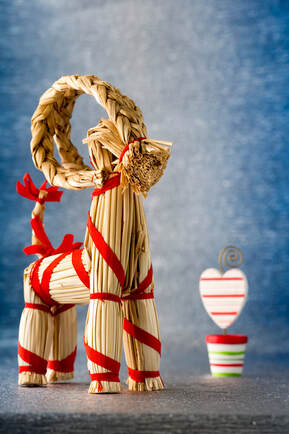 The Yule Goat is a figure in Scandinavian folklore that is associated with the Christmas season. According to legend, the Yule Goat is a mischievous creature that visits homes on Christmas Eve to deliver gifts to children. In some versions of the story, the Yule Goat is accompanied by elves or other helpers. The origins of the Yule Goat tradition are somewhat unclear, but it is thought to date back to ancient Norse mythology. In the past, the Yule Goat was often portrayed as a fearsome figure who demanded that people offer him gifts or risk being punished. However, over time, the Yule Goat has become more closely associated with the holiday season and is now seen as a friendly, gift-giving figure similar to Santa Claus. In Scandinavian countries, it is traditional to leave out food and drink for the Yule Goat on Christmas Eve, and children often leave out a pair of shoes or socks to be filled with small gifts or treats. Some people also decorate their homes with Yule Goat-themed decorations or hang small, goat-shaped ornaments on their Christmas trees. 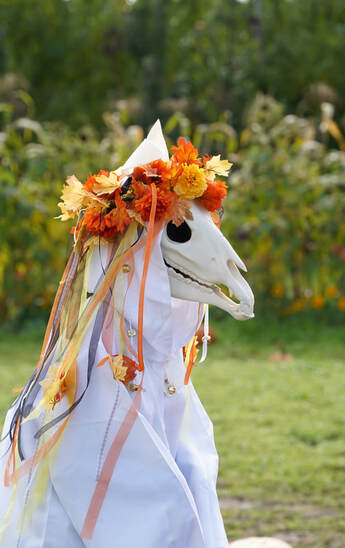 Mari Lwyd (pronounced "MAH-ree LOO-eed") is a traditional Welsh folk custom that is practiced around Christmas and New Year's. The tradition involves a group of people going door-to-door, singing carols and performing a play that involves a horse's skull on a pole. The Mari Lwyd is a horse's skull, which is traditionally adorned with ribbons and other decorations. It is carried by a person who is dressed in a white sheet, and the group is accompanied by musicians who play traditional Welsh instruments. The group goes from house to house, singing carols and performing the play, which usually involves a challenge or contest of some kind. The origins of the Mari Lwyd tradition are somewhat unclear, but it is thought to date back to the Middle Ages. Some people believe that the Mari Lwyd represents the spirit of the horse, which was an important animal in Welsh folklore. Others see it as a way of celebrating the end of the year and welcoming in the new one. The Mari Lwyd tradition is still practiced in some parts of Wales, and has become something of a tourist attraction. It is an important part of Welsh cultural heritage and is a unique way of celebrating the holiday season. 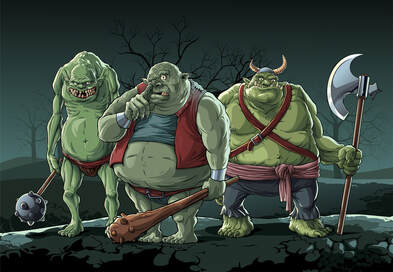 Kallikantzari (also spelled Kallikantzaros or Calicantzaros) are creatures from Greek folklore that are associated with the Christmas season. According to legend, Kallikantzari are mischievous, goblin-like creatures that spend most of the year underground. However, they come up to the surface during the Christmas season, causing mischief and causing trouble for humans. The Kallikantzari are said to be responsible for a variety of things, including causing fires, destroying crops, and causing animals to become sick. They are also believed to be able to shape-shift into various forms, including animals and humans. In Greek tradition, it is believed that the Kallikantzari are kept in check by the light of the Christmas candles, which are lit on Christmas Eve and burn throughout the holiday season. It is also believed that the Kallikantzari will return underground once the Christmas season is over. The Kallikantzari are an important part of Greek folklore and are often used to teach children about the importance of behaving well during the holiday season. |
Why the Christmas Lace Notes?2023 has come along and this is the second year of my lace notes. All kicks off on 15th November with the first of this year's Chrismas movies. One a day, every day until Christmas. Archives
December 2023
Categories
All
|
